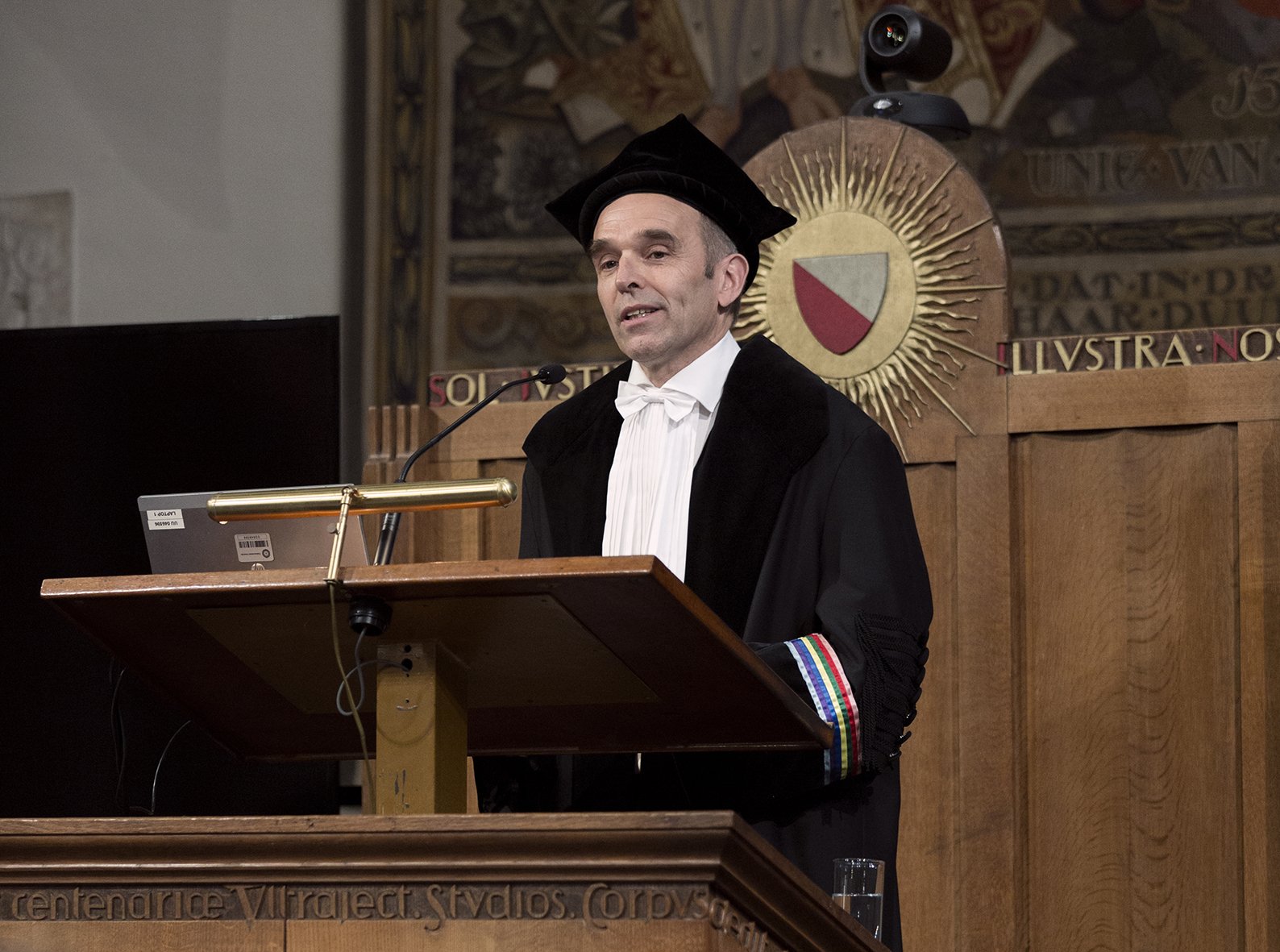Inaugural Lecture Maarten Hajer

Inaugural Lecture
In his ‘openbare les’, the traditional way of accepting a professorship at Dutch universities, Professor Maarten Hajer formally accepted the distinguished position of Chair in Urban Futures and outlined the research programme of the Studio. The talk is entitled ‘De macht van verbeelding’ (The Power of Imagination).
Cities are places of confrontation, interchange, dynamism, diversity, creativity, vulnerability, opportunity, collaboration, etc. The lecture began by explaining the city as a place where material and biophysical aspects and the cultural and social aspects of life come together. This manifests into a double challenge: that of both climate change and social inclusion: “In this sense, it means connecting the climate challenges with the development of a new notion of urbanness. This represents a major design challenge."
Hajer builds on these ideas to set the conceptual background for the creation of the Urban Futures Studio: “The city is at once our most impressive act of cultural creation and a monster threatening to devour us. Can we tame this monster and channel its energy? Oddly enough, I think we can. This is under the assumption that we ‘think big’: that we look further back than is customary, and further ahead, and with a little more pluck. It is under the assumption that we use a city’s complexity as a point of departure. And under the assumption that we dare to think outside of the existing frameworks.”
Daring to think outside existing frameworks for Urban Futures Studio means using the idea of imaginaries and fictional expectations to study and examine possible futures. And to ask questions like: “Which fictional expectations can we find in the present? Which fictional expectations are dominant? What gives the expectations their power and influence? How do concrete imaginaries spread? In short, how does the power of imagination work?".
The address introduced the three core concepts for the work of the Urban Futures Studio:
● researching imaginaries of the future
● exploring Techniques of Futuring
● understanding transformative capacity
Hajer summarized this aim by concluding: “My research will not be purely analytic. The Urban Futures Studio is not a laboratory. I expressly see the Studio as a place where the university actively contributes to considering social processes. This is the tradition of transdisciplinary research, not only do we collaborate with various disciplines, but social actors are also directly involved in the dynamics of the research. I hope that here at Utrecht University, our methodology will become more robust in the years ahead”.
Projects like Energetic Odyssey and Nordic City were highlighted as examples of initial testing of new methods: experiments and research-based design. In such methods, ‘soft spaces’, or informal and non-traditional spaces, of politics with ‘unexpected agents of change’ can lead to innovation.
The lecture concluded with a discussion about the way that the Urban Futures Studio has been created to work on “the domain of the ‘in-between’". To deal with the current challenges of the future city (energy infrastructure, “climate neutral” living, and mobility), a move beyond functional differentiation is necessary. “What I now fear is not that the challenge is insurmountable; what I fear is that – fearing too much uncertainty – we will address the challenge in a segmented, sectoral fashion".
The full-text of Prof. Maarten Hajer's inaugural lecture is freely available in both Dutch and English.

